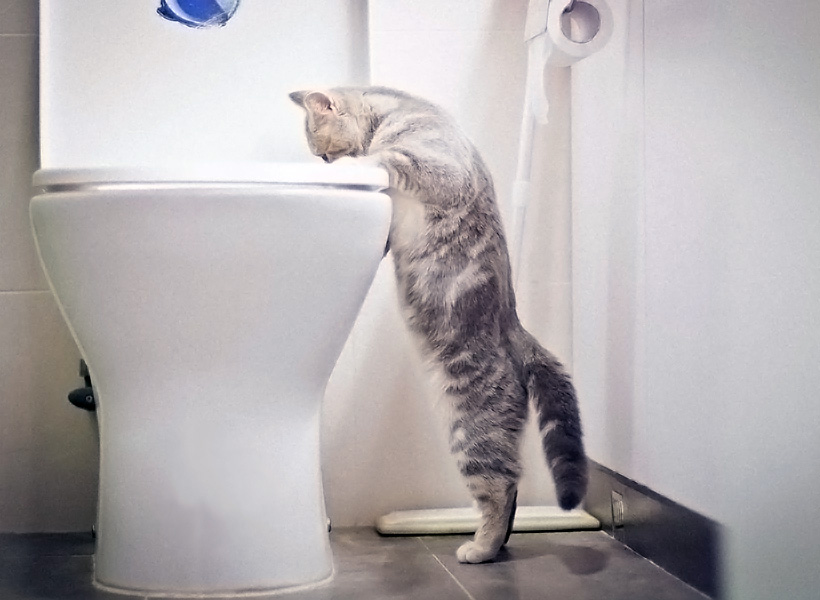Dangers of Flushing Cat Poop Down Your Toilet - Avoid Potential Problems
Dangers of Flushing Cat Poop Down Your Toilet - Avoid Potential Problems
Blog Article
Almost everyone has their private piece of advice involving Can You Flush Cat Poo or Litter Down the Toilet?.

Intro
As feline owners, it's important to be mindful of exactly how we deal with our feline buddies' waste. While it may seem convenient to flush cat poop down the commode, this practice can have detrimental consequences for both the setting and human health and wellness.
Ecological Impact
Flushing cat poop introduces harmful pathogens and bloodsuckers right into the water system, positioning a substantial threat to marine communities. These impurities can adversely affect aquatic life and compromise water quality.
Wellness Risks
In addition to ecological problems, flushing cat waste can also position wellness risks to humans. Pet cat feces may include Toxoplasma gondii, a parasite that can trigger toxoplasmosis-- a possibly serious illness, especially for expecting women and people with damaged immune systems.
Alternatives to Flushing
Luckily, there are safer and a lot more accountable ways to dispose of pet cat poop. Take into consideration the complying with alternatives:
1. Scoop and Dispose in Trash
The most usual approach of getting rid of feline poop is to scoop it into a naturally degradable bag and throw it in the trash. Be sure to use a specialized clutter inside story and take care of the waste quickly.
2. Usage Biodegradable Litter
Select eco-friendly pet cat clutter made from products such as corn or wheat. These trashes are eco-friendly and can be safely taken care of in the trash.
3. Bury in the Yard
If you have a backyard, take into consideration hiding pet cat waste in a marked location away from vegetable yards and water sources. Be sure to dig deep adequate to stop contamination of groundwater.
4. Set Up a Pet Waste Disposal System
Buy a pet dog waste disposal system especially made for cat waste. These systems utilize enzymes to break down the waste, minimizing odor and environmental impact.
Verdict
Liable animal ownership prolongs beyond offering food and shelter-- it additionally involves correct waste administration. By refraining from purging pet cat poop down the commode and going with alternate disposal techniques, we can decrease our environmental footprint and secure human health.
Why Can’t I Flush Cat Poop?
It Spreads a Parasite
Cats are frequently infected with a parasite called toxoplasma gondii. The parasite causes an infection called toxoplasmosis. It is usually harmless to cats. The parasite only uses cat poop as a host for its eggs. Otherwise, the cat’s immune system usually keeps the infection at low enough levels to maintain its own health. But it does not stop the develop of eggs. These eggs are tiny and surprisingly tough. They may survive for a year before they begin to grow. But that’s the problem.
Our wastewater system is not designed to deal with toxoplasmosis eggs. Instead, most eggs will flush from your toilet into sewers and wastewater management plants. After the sewage is treated for many other harmful things in it, it is typically released into local rivers, lakes, or oceans. Here, the toxoplasmosis eggs can find new hosts, including starfish, crabs, otters, and many other wildlife. For many, this is a significant risk to their health. Toxoplasmosis can also end up infecting water sources that are important for agriculture, which means our deer, pigs, and sheep can get infected too.
Is There Risk to Humans?
There can be a risk to human life from flushing cat poop down the toilet. If you do so, the parasites from your cat’s poop can end up in shellfish, game animals, or livestock. If this meat is then served raw or undercooked, the people who eat it can get sick.
In fact, according to the CDC, 40 million people in the United States are infected with toxoplasma gondii. They get it from exposure to infected seafood, or from some kind of cat poop contamination, like drinking from a stream that is contaminated or touching anything that has come into contact with cat poop. That includes just cleaning a cat litter box.
Most people who get infected with these parasites will not develop any symptoms. However, for pregnant women or for those with compromised immune systems, the parasite can cause severe health problems.
How to Handle Cat Poop
The best way to handle cat poop is actually to clean the box more often. The eggs that the parasite sheds will not become active until one to five days after the cat poops. That means that if you clean daily, you’re much less likely to come into direct contact with infectious eggs.
That said, always dispose of cat poop in the garbage and not down the toilet. Wash your hands before and after you clean the litter box, and bring the bag of poop right outside to your garbage bins.
https://trenchlesssolutionsusa.com/why-cant-i-flush-cat-poop/

Do you like more info about How to Dispose of Cat Poop and Litter Without Plastic Bags? Try to leave feedback below. We'd be pleased to listen to your suggestions about this piece. We hope that you come back again in the near future. Enjoyed reading our piece of writing? Please share it. Help other people check it out. Bless you for your time. Visit us again soon.
Book Service Report this page